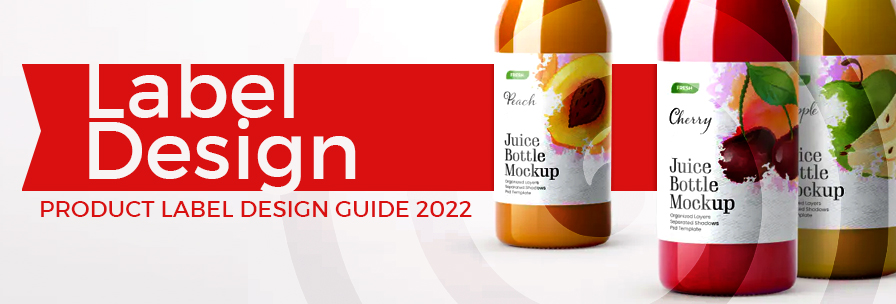
Wine labels have come so far from conventional printing designs. Nowadays, label printing
companies incorporate many printing techniques into the labels, making them eye-catching for
customers. The emerging trends in the wine label printing industry intend to go beyond just
attracting a potential customer, reveal the brand’s true identity and build a loyal customer base.
The article sheds light on the unique trends embraced by wine labels and how this helps to
highlight your product off the shelf.
Must-Have Details on Wine Labels
Before reading about the emerging trends in the wine label printing industry, here are some
pieces of information that the label must present to the customers.
Name or Brand: The essential component of wine labels is the name of the producer or the
brand name. It indicates the company that brewed the wine.
Region of Production: True wine lovers know the quality and taste of wine through the region
of its production. It’s imperative to state the fact on the label so customers can associate with
the place. In most cases, the label has the name of a specific vineyard which produced the
grapes for the particular wine.
Variety or Appellation: The raw material for wine, i.e., grapes, are available in multiple
varieties. A company needs to display the exact name of the type of grapes and let the
customers know what they are having.
Vintage or Non-Vintage: The fact that it’s vintage or non-vintage tells a lot about the wine. The
year of harvest mentioned on the wine label can reveal a lot about its quality. Suppose if in a
particular year there was a bad storm, the grapes will not be of fine quality, and the wine will
reflect the aftermath of the storm. Therefore, in the high-end markets, the year will help
customers recognise the quality of the wine. However, there are wine labels devoid of the year
of harvest, which makes it non-vintage, thereby of lower value.
Alcohol Volume: The alcohol content mentioned on the wine bottle signifies the amount of
alcohol in the package. Usually, it’s in percentages, and one can find these in fine prints.
Sulphites: Sulphite is a food preservative widely used in the wine industry to preserve its
flavour and freshness. By law, it’s mandatory to state if there are sulphites on a wine bottle.
Emerging Trends in Wine Label Printing
Now that we know the mandatory components of a wine label, let’s understand how the label
printing industry is perking these with their unique progressionPersonalisation
Personalisation is becoming the key to success for every business. Now organisations focus
more on knowing their customers, interacting with them and presenting specially-crafted
solutions.
In the wine label printing industry, there are multiple forms of personalisation. Brands use either
countless individual designs on the wine labels where no two designs are the same. It creates
individuality for each label. Another tactic to personalise the wine label is by adding variable
components on the label, thereby rendering a unique name and number.
Embossing and Debossing
Embossing and debossing are forms of embellishments that can highlight the wine labels and
attract more customers. Embossing is when the label media rises to emphasise a particular text
or image, while debossing is the opposite. Here the imagery or text is pressed down to create a
shadow-like effect. Both these label printing techniques create a unique texture on the label
and render it a premium finish.
Foiling
Foiling renders an instant metallic sheen to the wine labels. When it was only the gold and
silver foil used on wine labels, the modern touch included a rainbow of colours. Adding foiling to
the wine labels delivers a premium finish. Also, the label printing industry is introducing texture
to foils that will elevate the label.
High Builds
Sometimes brands need to highlight a few elements of the label. In such a situation, it isn’t
possible to use an embellishment that will elevate the entire label, so high builds come to the
rescue. This technique highlights the key points while maintaining the remaining text and
imagery in the background. We commonly see high builds wherein the highlighted text is in the
glossy finish on a matte background.
Silk Screen
Using random colours to spot specific letters on the labels is a relatively new trend. Bold colours
highlight the chosen text to create a unique look and instantly educate the onlooker about the
product’s vital pieces of information.
Choice of Label Media
The label printing embellishments can create the desired effect when coupled with different
types of labelling surfaces. Therefore, there is a diverse range of label media, from glossy,
textures, transparent film, etc., to provide a distinctive sheen to the label. Label printing
companies use the best label media types depending on the product’s storage conditions.
Distinct Shapes & Sizes
Traditionally the wine labels were rectangular. However, the changing trends have also hit the
shapes and sizes, giving a unique face to the product. Today, label printing companies can
create attractive wine labels in round, oval, diamond and other custom shapes. These help the
customer have an easy recognition sign of the product.
Concluding Words
The world of label printing is changing drastically. There are unique techniques and label media
suitable for every industry. Now, if we want our products to be a highlight on the retail shelf, it’s
high time to embrace these emerging trends and render the much-needed luxurious finish.
